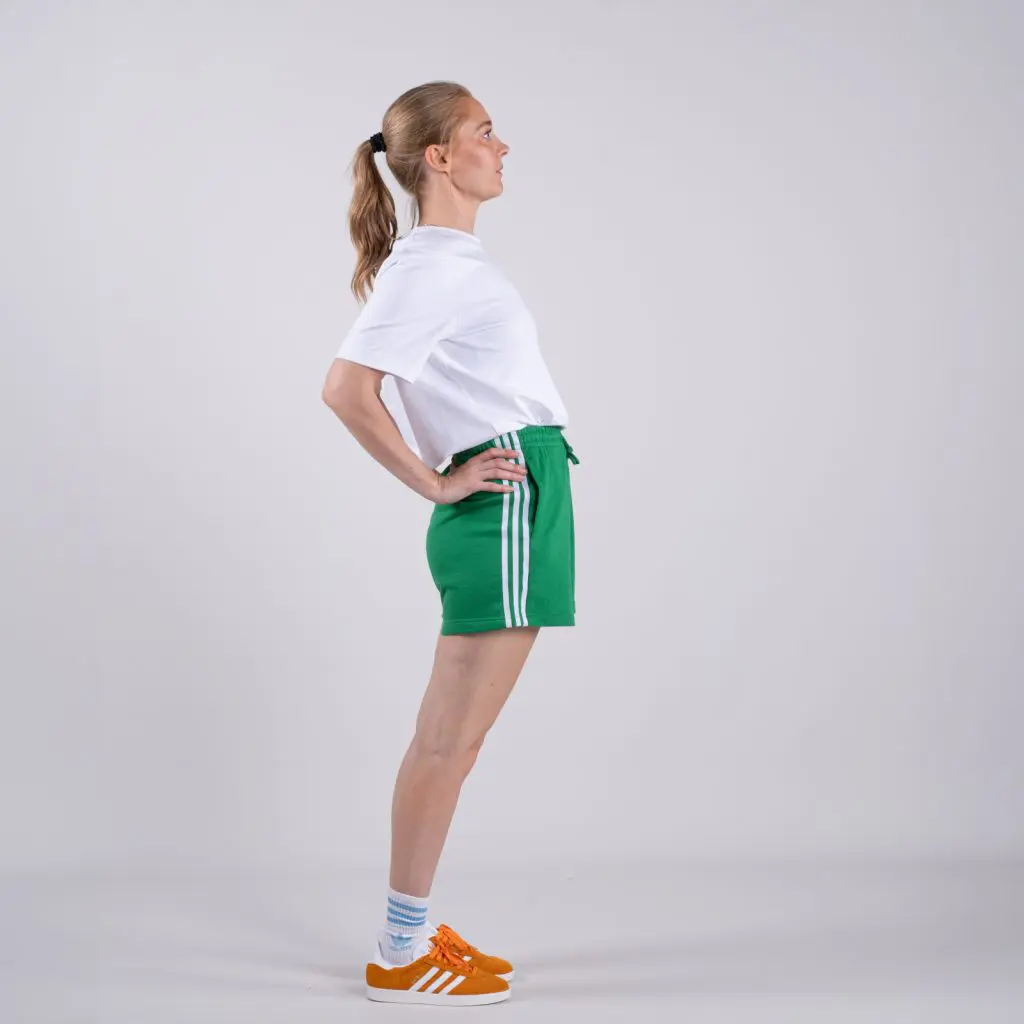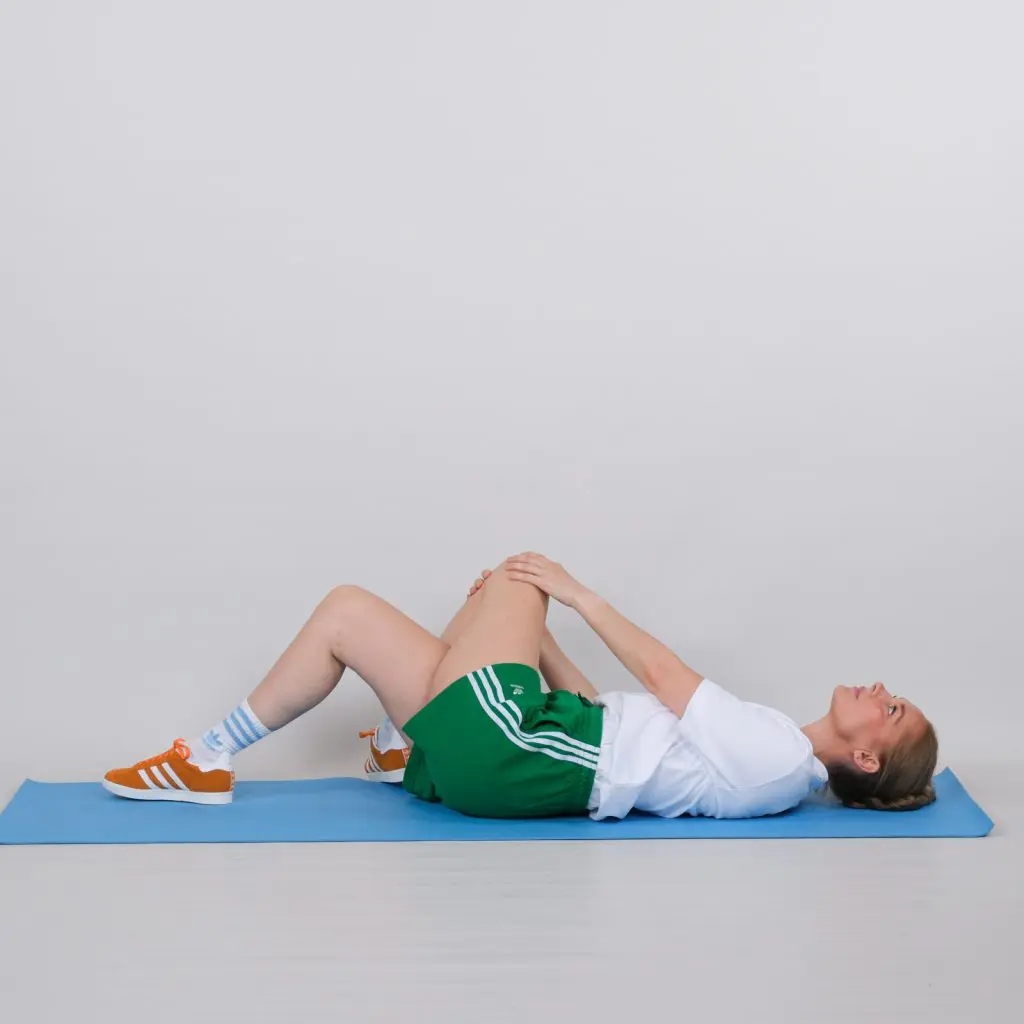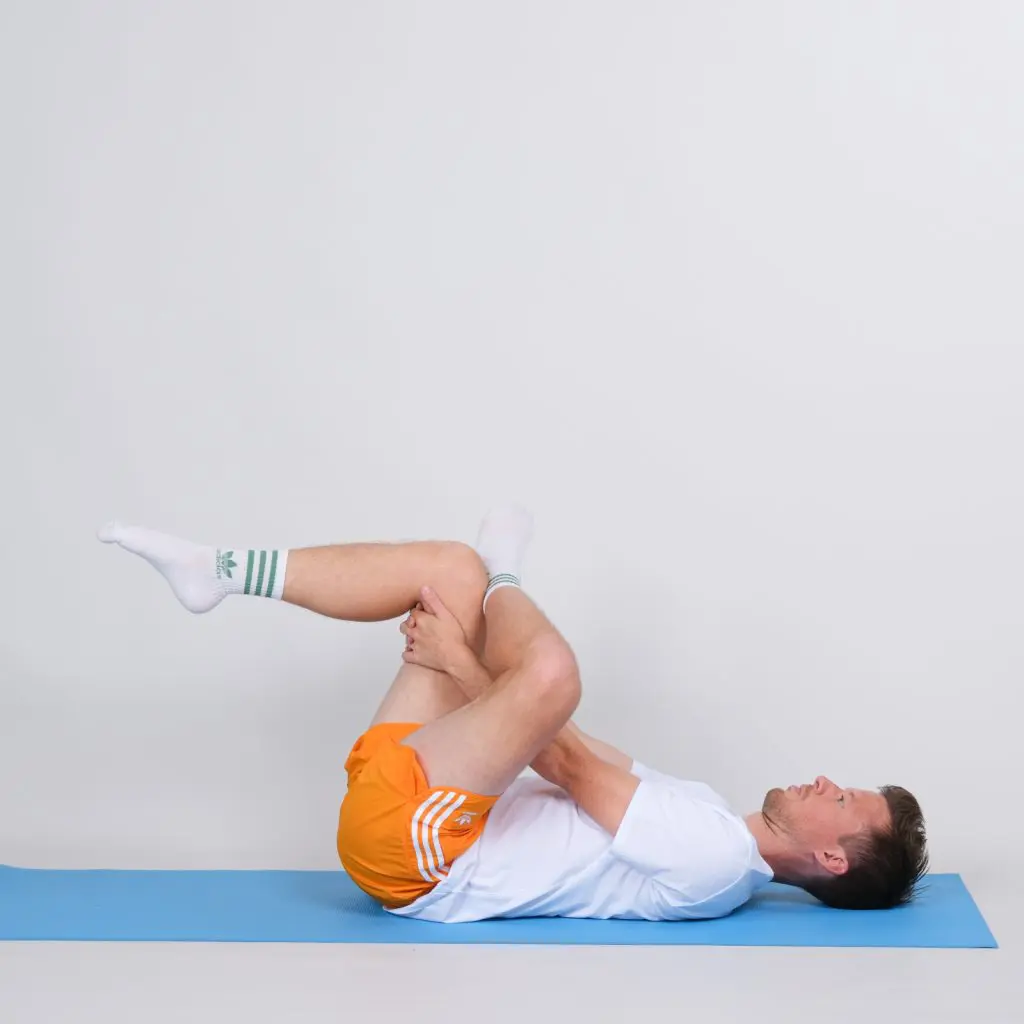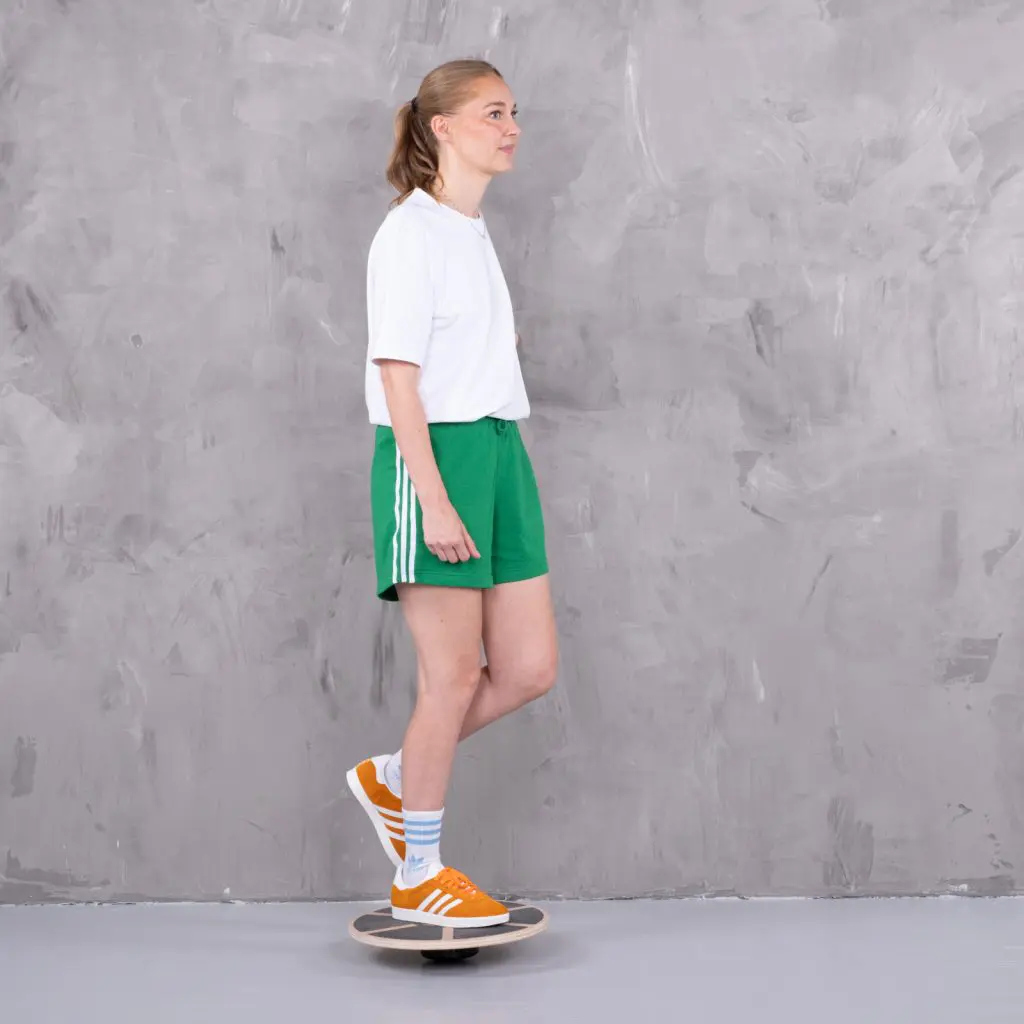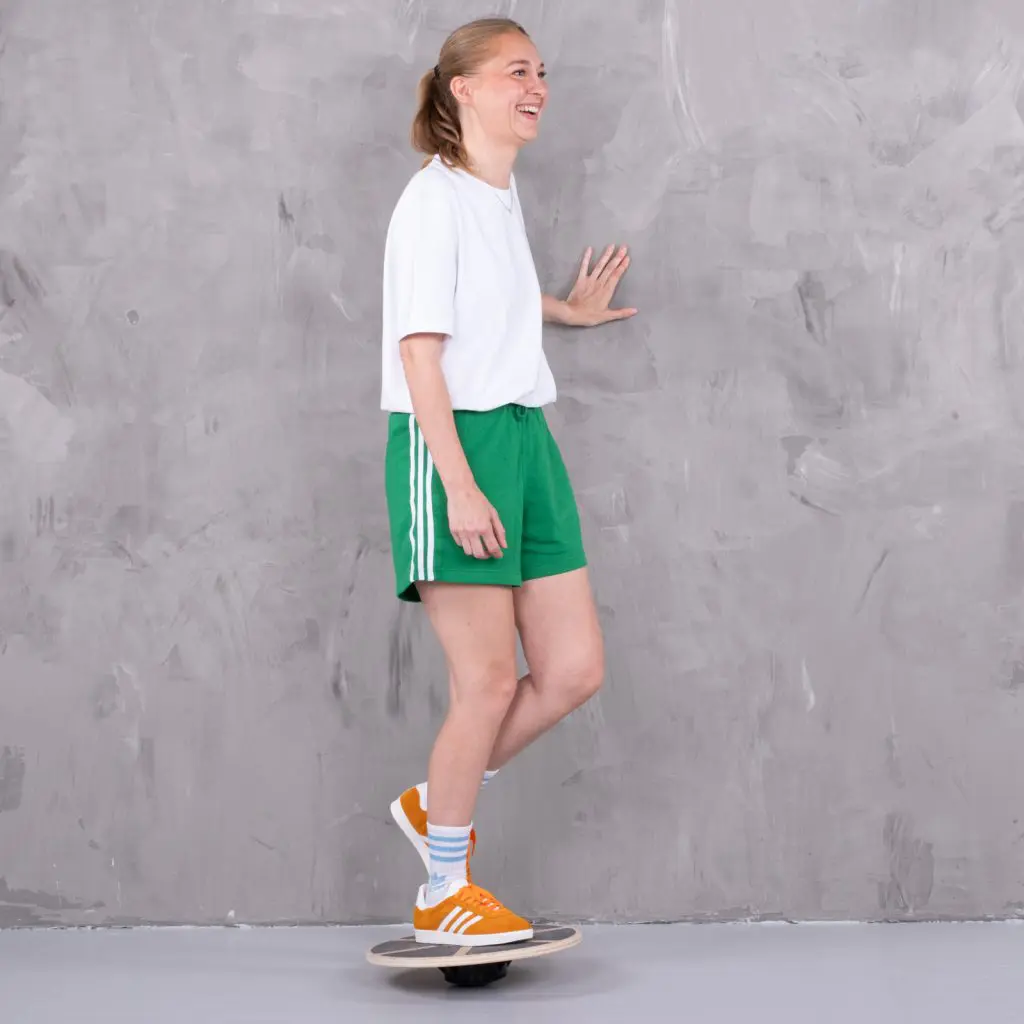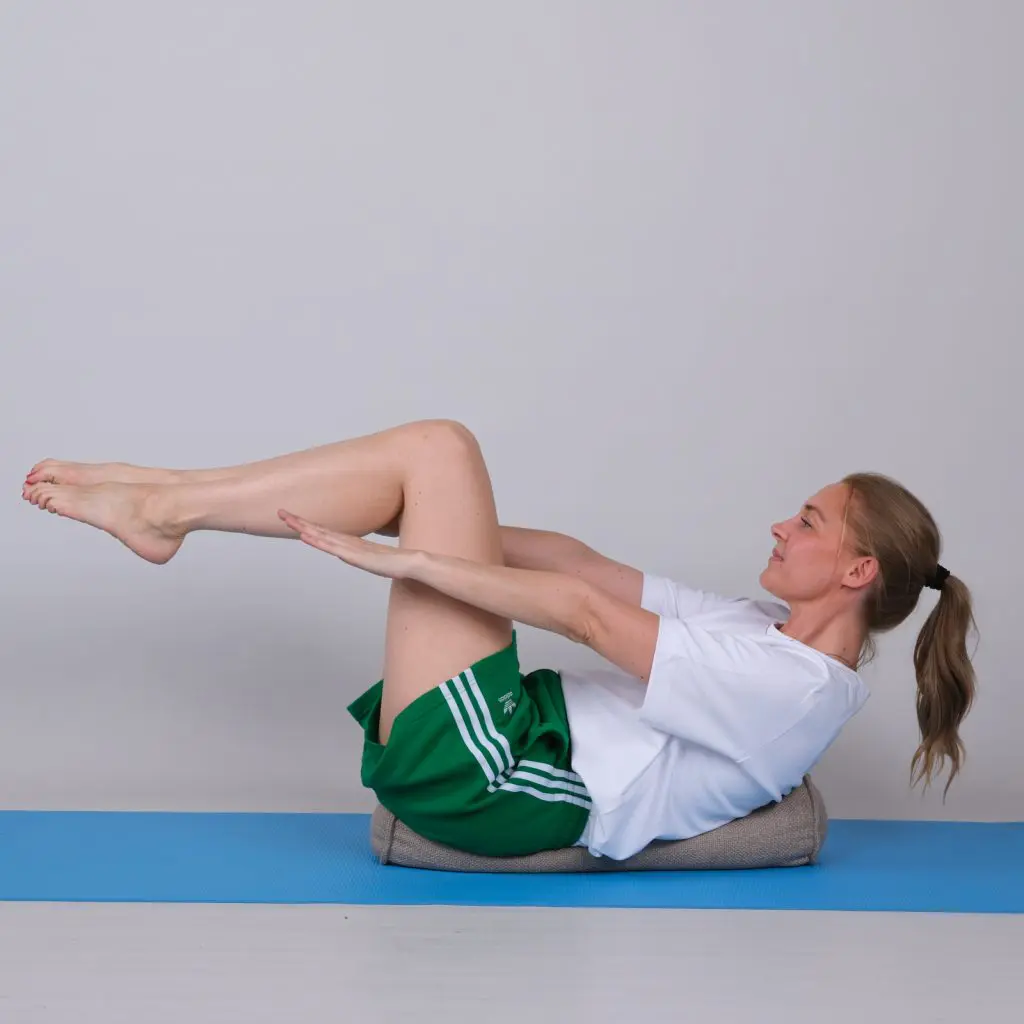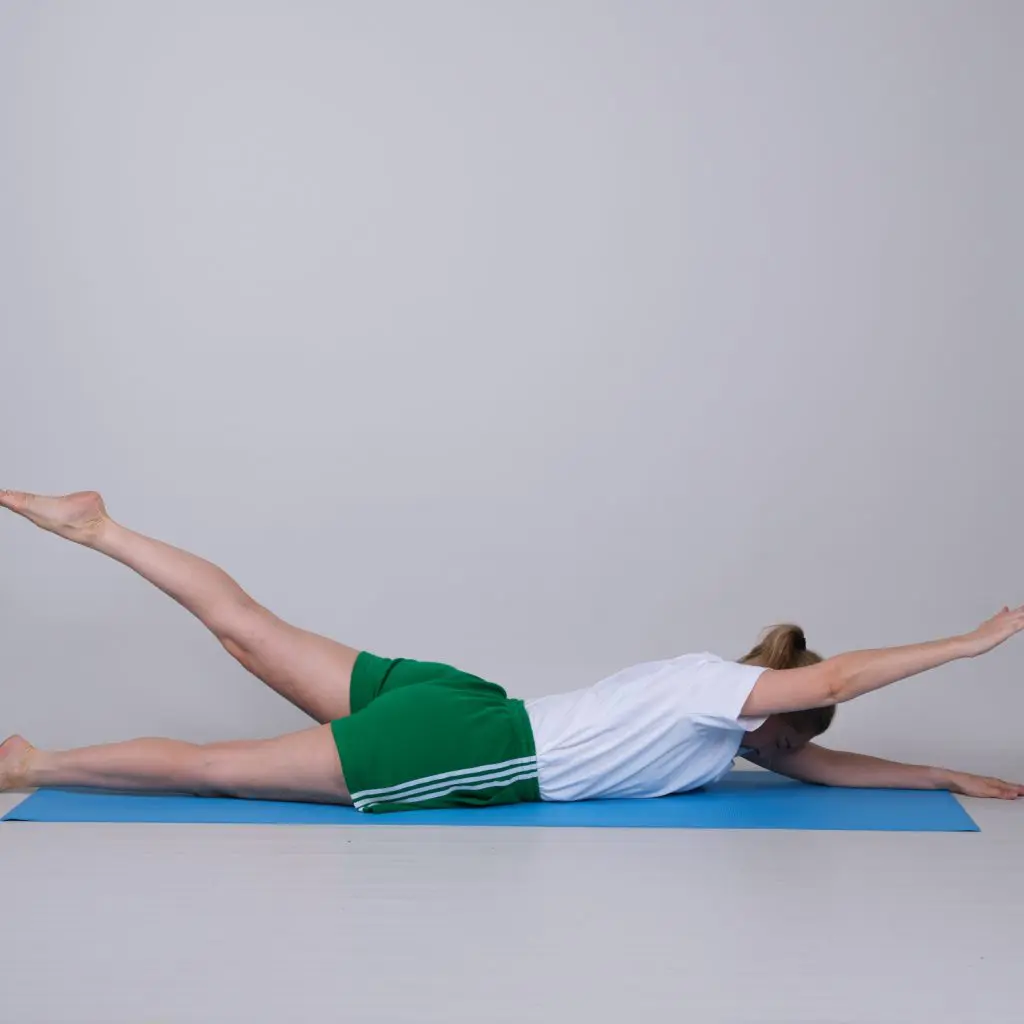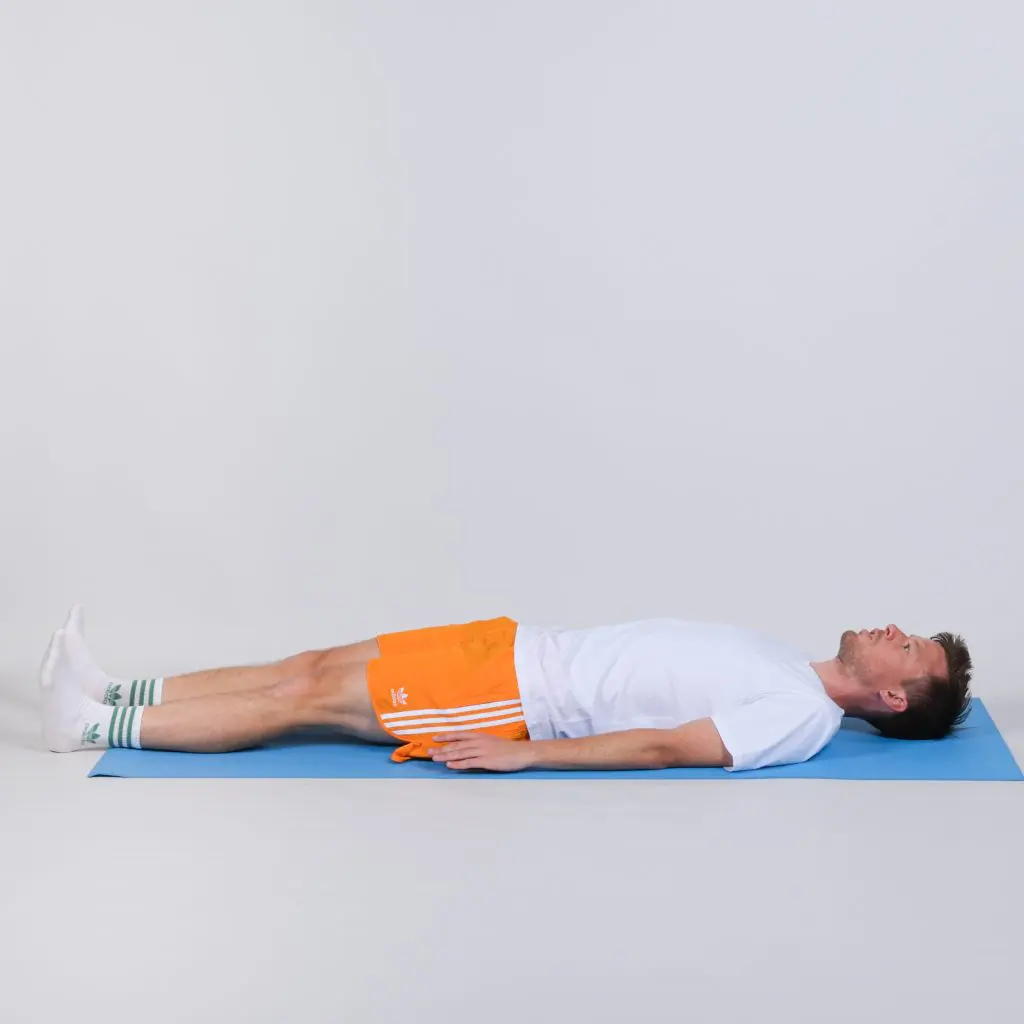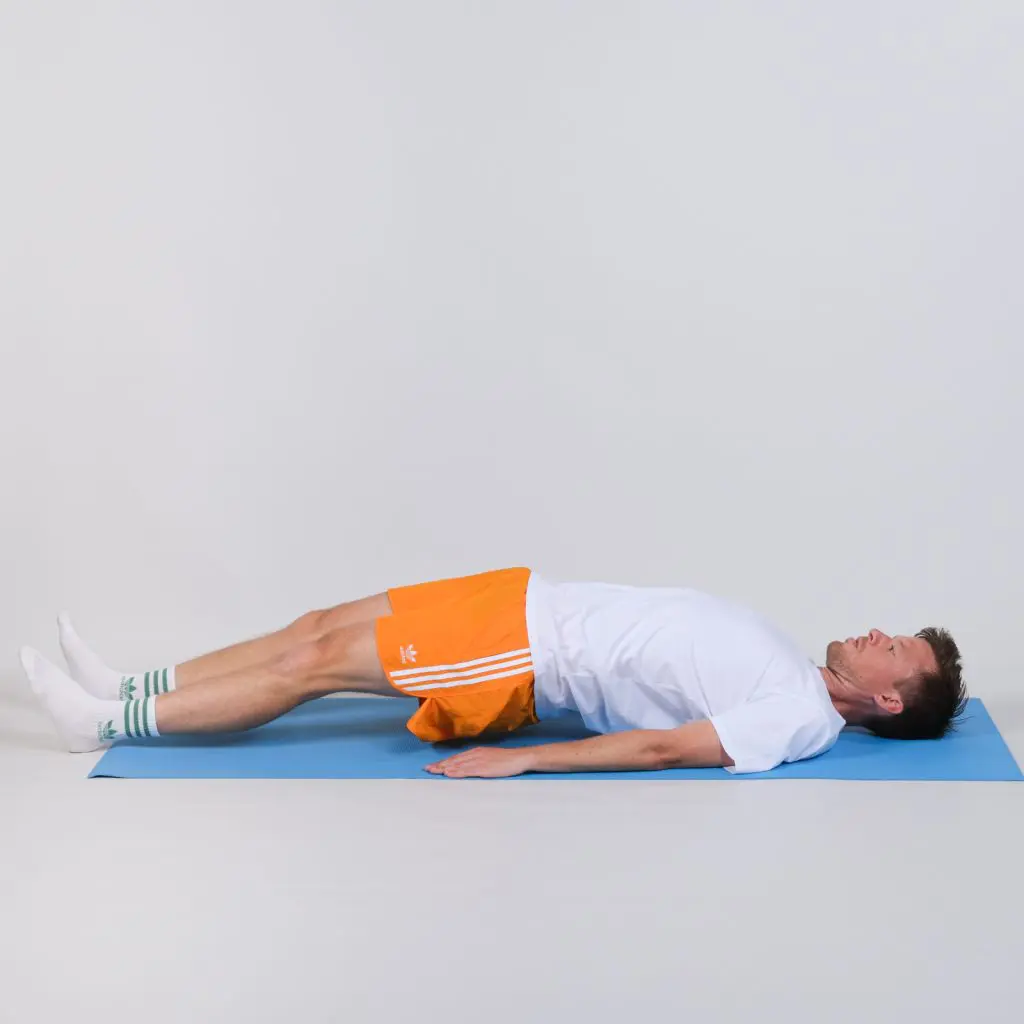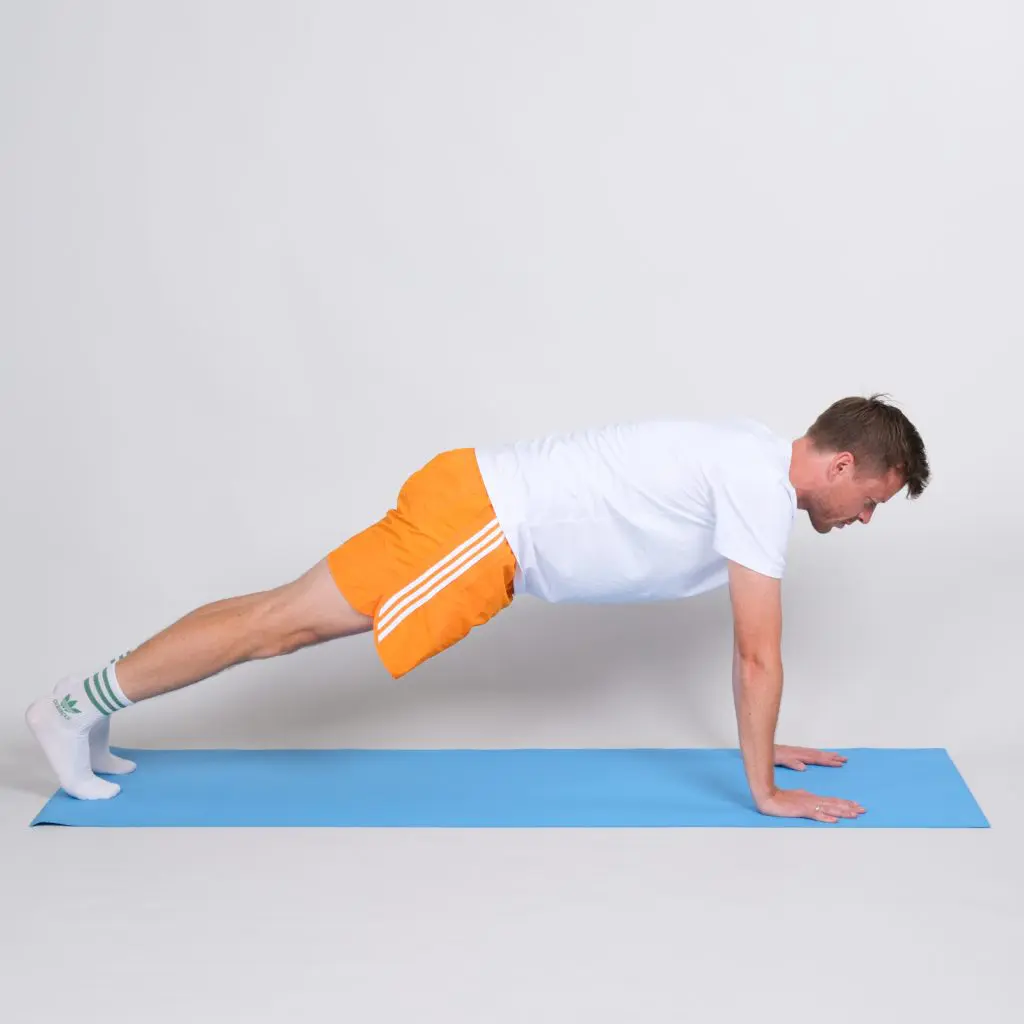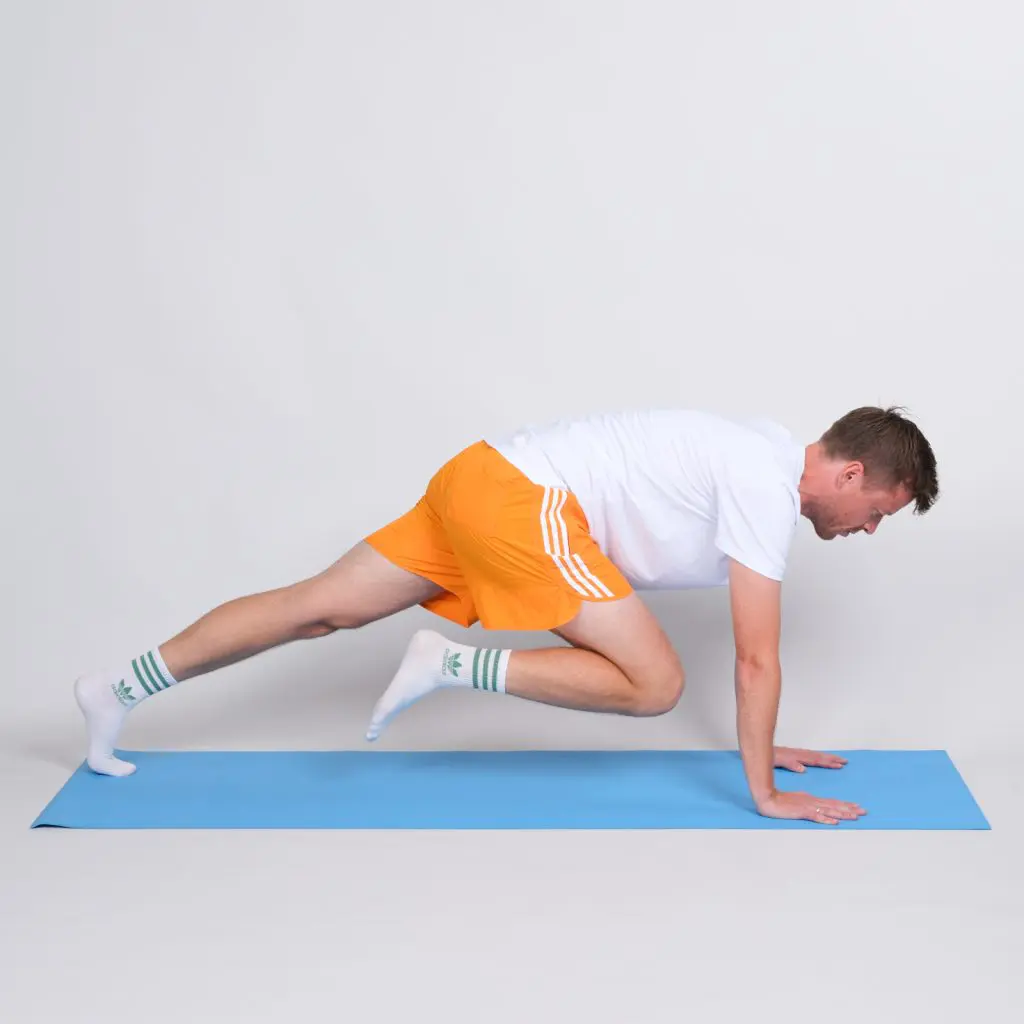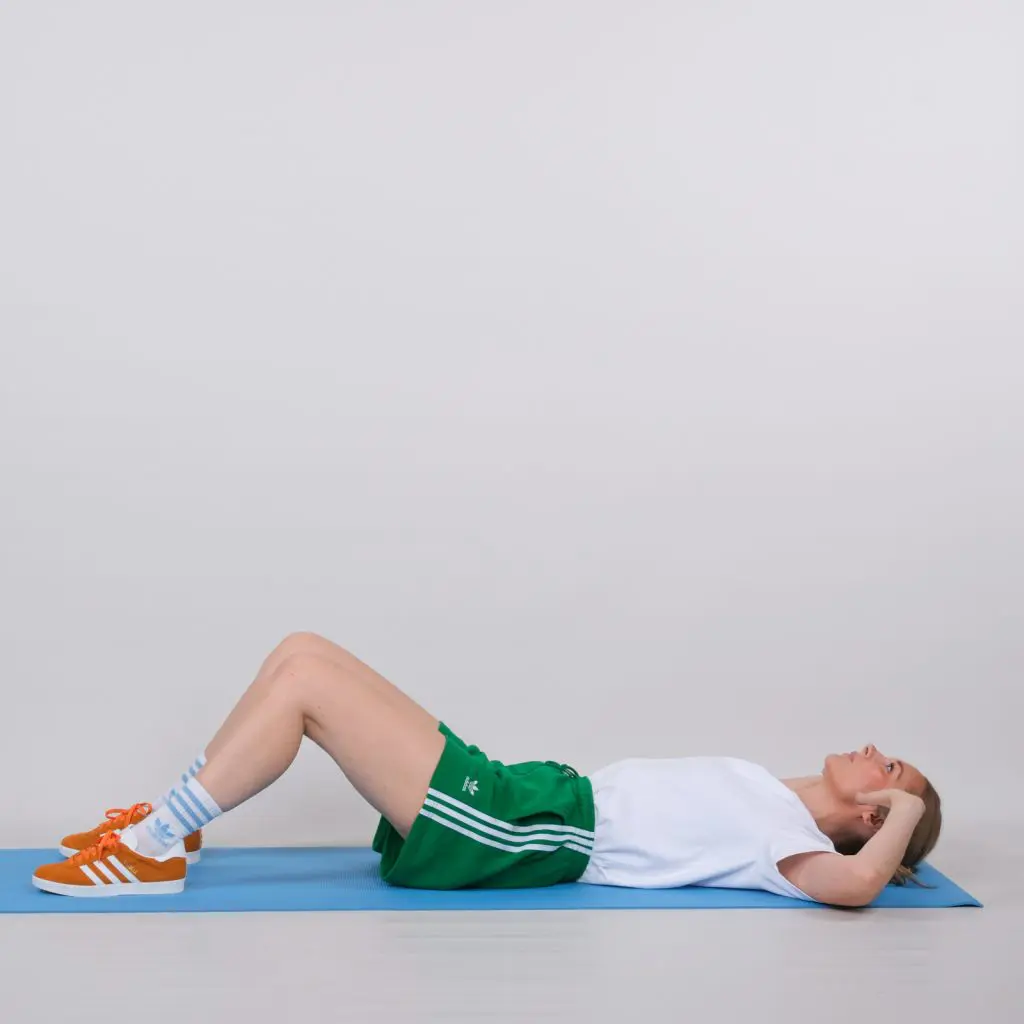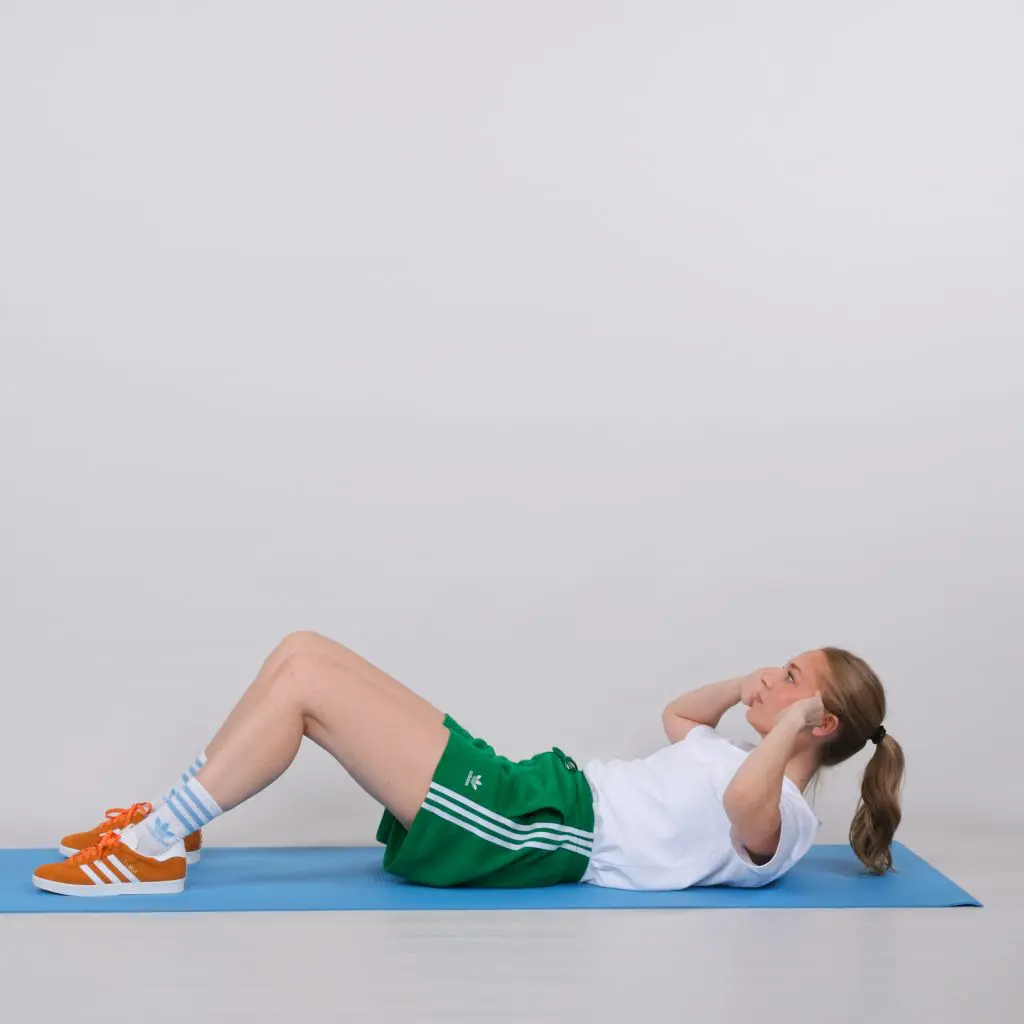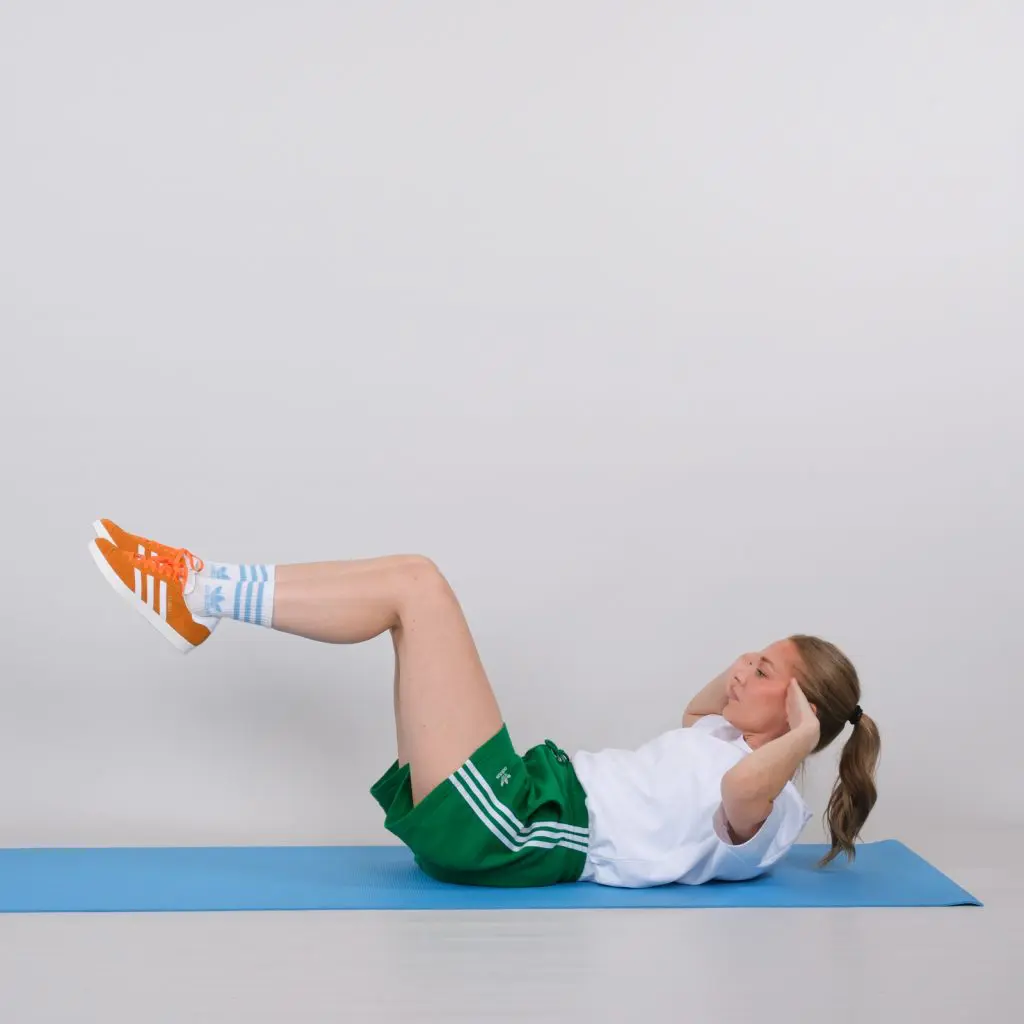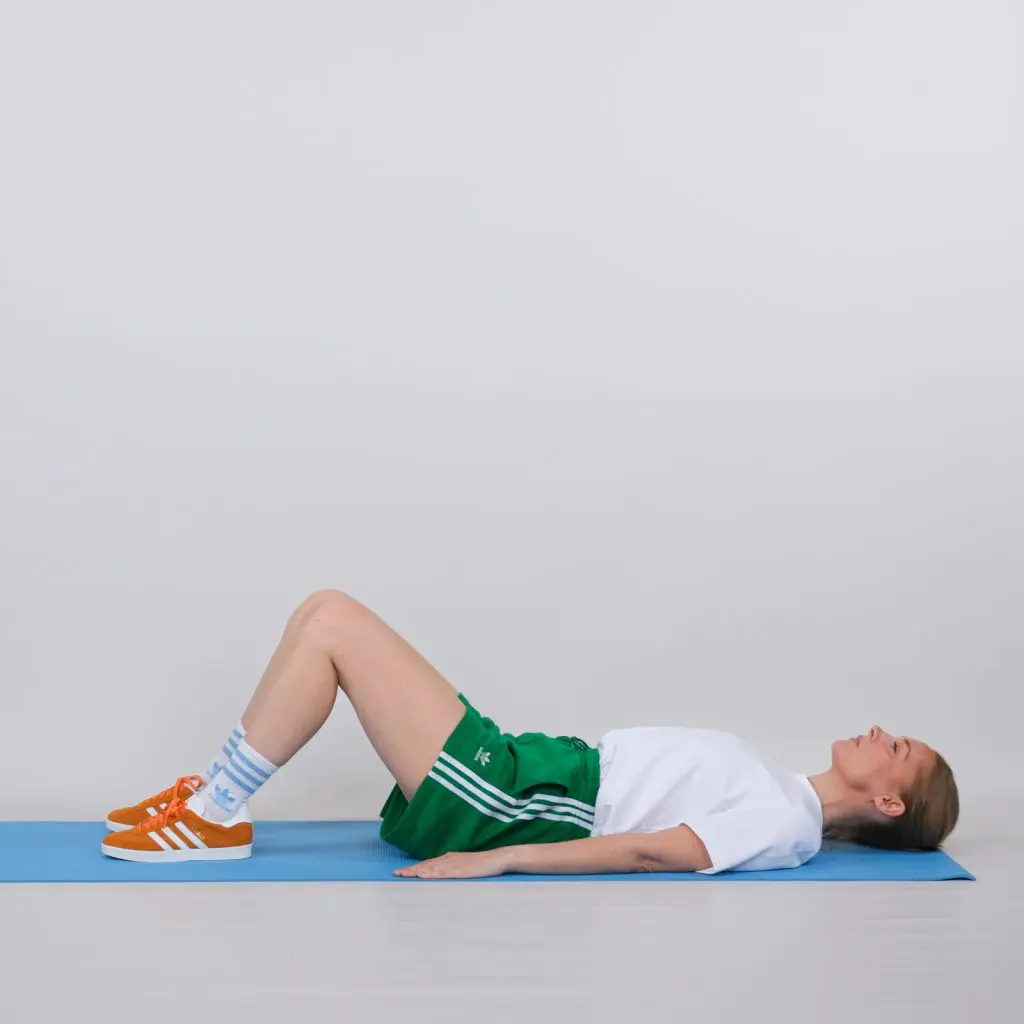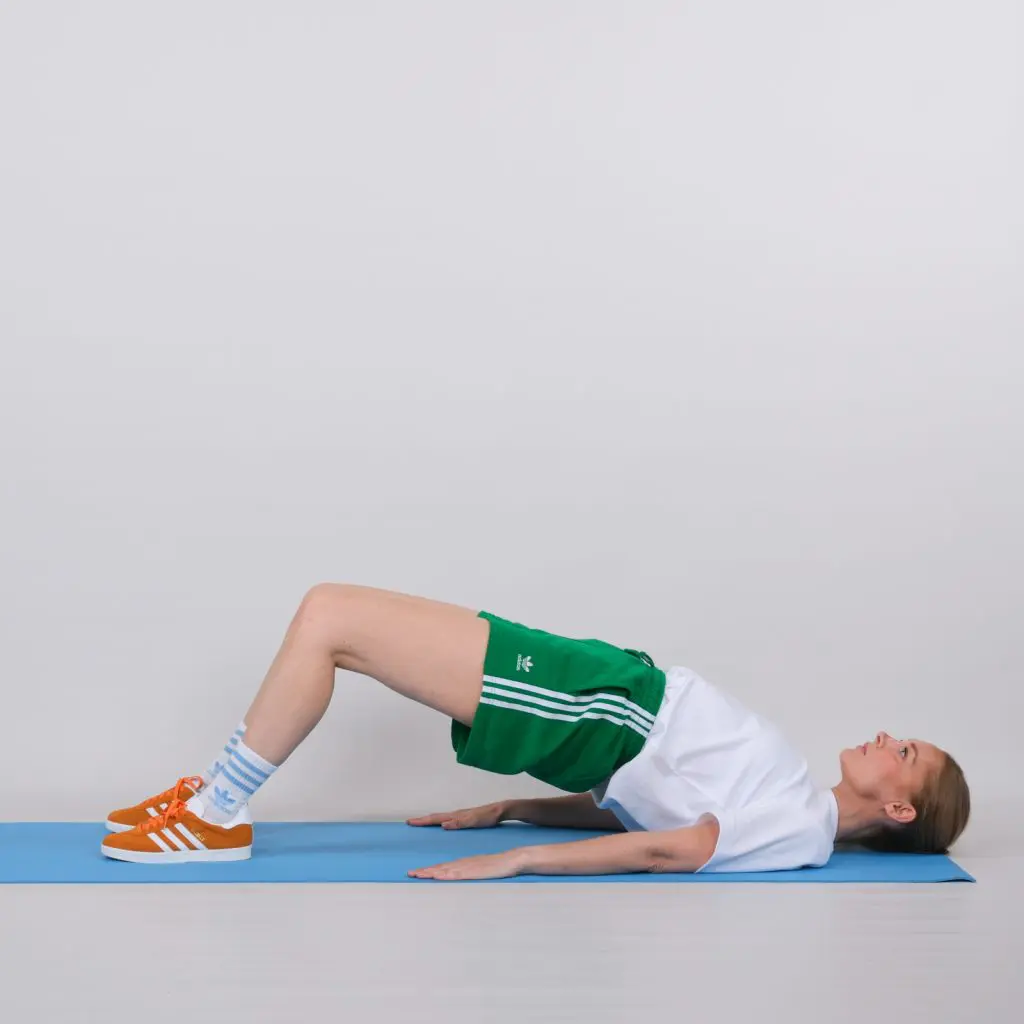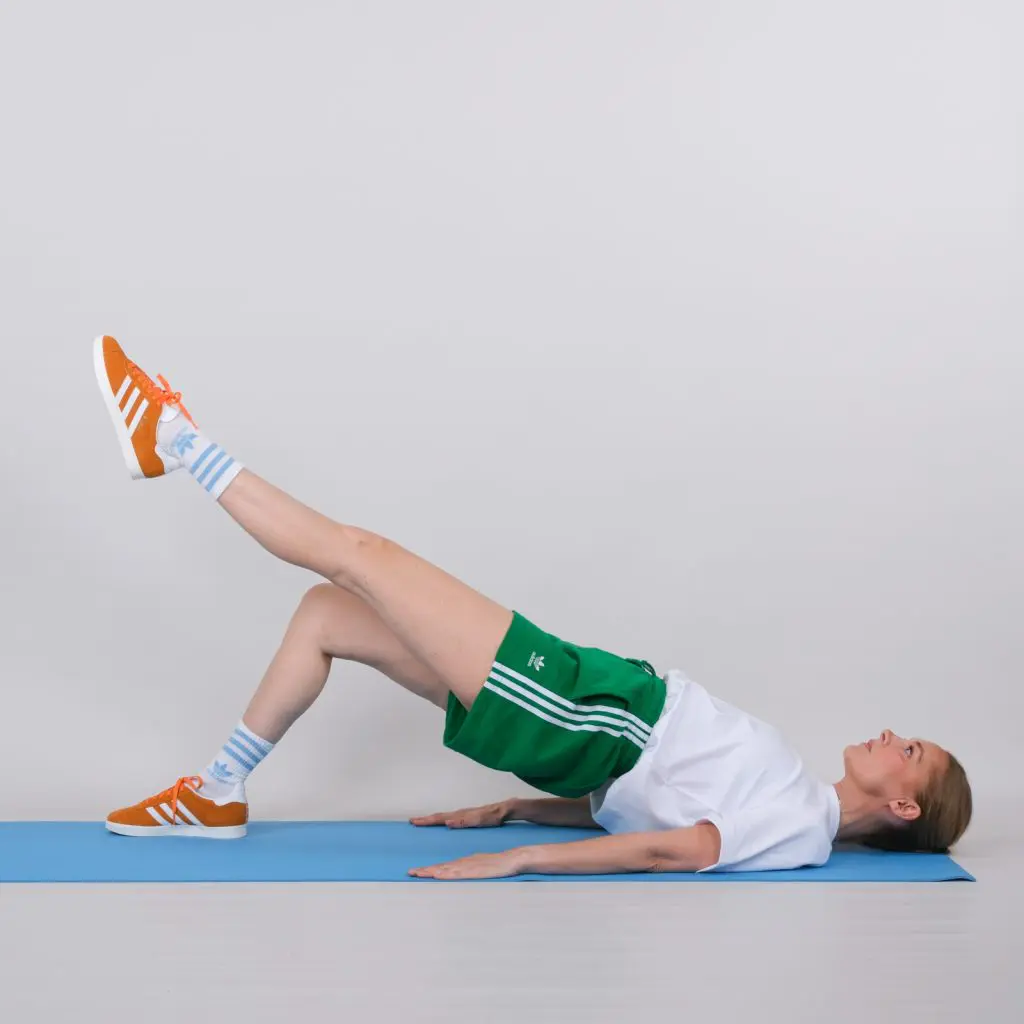Condition
Unlimited: Cycling, swimming, light jogging on soft surfaces.
Stretching
15 minutes of each training session
Lie on your back with one leg straight. Bend the other leg and place your foot on the other side of the stretched leg. With both hands, pull your knee up towards the opposite shoulder so that your buttocks are increasingly stretched. Hold the stretch for 20 seconds. Repeat the exercise on the opposite leg.
Lie on your back. Bend your right leg 90 degrees at the hip and knee Place the outside of your left foot against your right knee. With your hands on the back of your right knee, pull your leg up towards your head, so that the buttocks of your left leg become increasingly stretched. Hold the stretch for 20 seconds. Repeat the exercise on the opposite leg.
Coodination
5 minutes of each training session
Strength
40 minutes of each training session
‘Mountain climbers. Lie on the floor on your stomach and support only with your arms extended and on your toes. Knees and body are straight (same position as for push-ups). Put all your weight on one leg and bring the other knee as far forwards towards your chest as possible. Then bring your knee back to the starting position and put all your weight on this leg while repeating the exercise on the opposite side.
‘Pelvic lift with knee extension’. Lie on your back with your knees bent. Lift one leg straight up and simultaneously lift your hips off the floor. Your back, thighs and lower legs should be in a straight line. Hold the position for a few seconds and slowly lower your hips to the floor again. Repeat the exercise on alternating right and left leg


